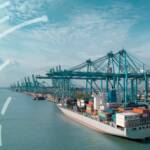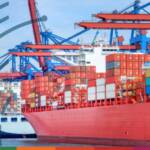There is no question that the turbulent global economy and the unending impact of the COVID-19 pandemic have wreaked havoc on China’s supply chain.
The country’s economy is taking a hit with factories being forced to shut down, resulting in a significant disruption in international commerce.
Creating opportunities from challenges
The disruption has created a unique opportunity for India, which is now gearing up to be a major player in global transport. And for owners of small and medium-sized businesses currently dependent on China for their imported goods and materials, India’s opportunity could provide long-term gains.
With massive investments in infrastructure and a commitment to manufacturing and shipping, India is determined to achieve a more prominent role in the global supply chain. The nation will have the chance to capitalize on this opportunity, but it will take time for the country to make the necessary investments to develop comprehensive infrastructure, and an efficient supply chain ecosystem.
Home to a population of 1.4 billion people who empower a well-educated and low-paid workforce, India’s government is increasingly open to foreign investment. This means that businesses can easily set up operations in India and take advantage of the country’s low labour costs and abundance of natural resources that include minerals, oil, and gas, which can be used to produce a variety of goods.
India is also a major producer of agricultural products, which can be used to feed the world’s population. While India currently has a number of challenges in becoming a manufacturing exporting super force, an apathetic government is certainly not among them.
Government supported growth
The Indian government has announced plans to invest over $1.4 trillion in infrastructure projects over the next five years. This includes investments in energy, transport, and urban infrastructure, as well as enhancing digital connectivity and the development of smart cities. This investment will help to strengthen India’s manufacturing sector, as well as create an efficient and reliable supply chain that will support the country’s economic growth.
Additionally, the government is introducing incentives to attract foreign direct investment in the manufacturing sector. This includes tax incentives and reduces red tape, and increases the foreign investment limit in certain sectors.
Already one of the leaders of the global economy, India’s technology sector is growing rapidly. The country is home to some of the world’s most innovative startups and is becoming a tech hub for both domestic and international companies. India is also home to a large and growing labour and consumer base due to its steadily rising population.
The Indian government is planning on increasing spending by an estimated $25 billion to improve the shipping and port infrastructure, according to an article published in November on an Indian English language news service Times Now. This comes as no surprise since Apple has taken a significant interest in India and plans on increasing the production percentages of iPhones, according to recent reports.
In the next few years, Apple could be producing almost a quarter of its products in India rather than China. If Apple is any indication of what’s to come, other major corporations around the world may also turn to India for their manufacturing processes. And the subsequent ramp-up in productivity will pave the way for infrastructure that can provide a host of cost-efficient options for mid-sized companies.
One of the biggest risks for businesses and companies relying on the timely delivery of goods is depending on government policies that affect national economies and international transactions. If the global pandemic in 2020 taught the world anything about the supply chain, it is that being diversified is key to decreasing logistical risks.
Although China established itself as a supply chain leader and invested significantly in its infrastructure and manpower to support these initiatives, 2020 shifted the tide. The Chinese government has strong control over their industries.
China placed a “zero-COVID” policy and demanded lockdowns long after other countries ended their precautionary actions against the virus. This is another reason why companies are finding it more difficult to depend solely on the world’s leading manufacturer.
Conclusion
Small and mid-sized business owners will benefit immensely from India as the country improves its manufacturing and becomes a leader in the supply chain. By improving their infrastructure and manufacturing processes, these businesses will benefit from India’s new shipping resources to move goods more efficiently when importing.
As with all increases in competitive options, the customer will ultimately benefit. As the world witnessed in 2020, anything can happen, especially with international business.
Diversifying manufacturing around the world will be crucial to human economic stability and sustainability. Entrepreneurs, business owners and logistics managers looking to establish long-term relationships in an emerging marketplace that’s committed to collaboration, profitability, and growth should rigorously explore their options in India.







































